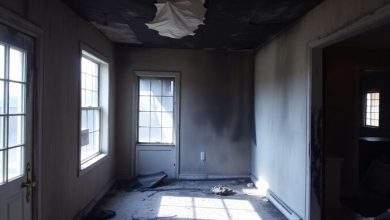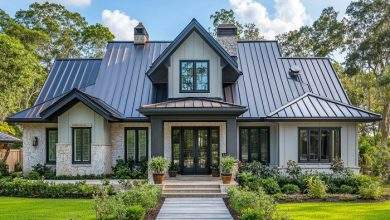
Renovating a home offers the chance to reimagine spaces, upgrade functionality, and boost property value. While homeowners often focus on finishes like flooring, cabinets, and lighting, the structural core of the property should never be overlooked. Two critical elements—foundation and roof—support every other part of the house. If neither is compromised, no cosmetic improvement will protect against future damage or financial loss. Including a detailed assessment of these areas in any renovation plan helps ensure that improvements are built on a solid, secure base. Over time, minor cracks in the foundation or a few loose shingles can lead to significant problems that impact safety, insulation, and structural integrity. Addressing potential issues early allows renovations to proceed without disruption and ensures the investment holds up for years. Skipping these inspections can turn a dream upgrade into an ongoing cycle of repairs and frustration.
Roof and Foundation Integrity Comes First
- Structural Health Before Surface Improvements
A strong foundation ensures everything built above it remains level, stable, and durable. When homes settle unevenly, it affects floors, walls, and windows, making doors stick, tiles crack, or gaps form in framing. During renovation, these signs may be misinterpreted as cosmetic defects, leading to short-term fixes that don’t address the root issue. Evaluating the foundation before beginning work is crucial to understanding the home’s long-term health. Contractors can identify signs of shifting, moisture intrusion, or poor drainage that might otherwise go unnoticed. Similarly, the roof must be evaluated for leaks and ventilation, flashing, and underlayment conditions. A roofing company can uncover weaknesses in the roof structure that could compromise insulation, indoor air quality, or even electrical safety if moisture penetrates key areas. By confirming that the structure is sound from both top and bottom, homeowners avoid setbacks and additional costs mid-renovation, allowing the rest of the project to move forward confidently.
- Avoiding Costly Surprises During Construction
Once renovation begins, surprises hidden behind walls or under floors often emerge. These can derail budgets and timelines if the foundation or roof wasn’t properly evaluated beforehand. For example, a sagging floor might require more than new joists—it could signal deeper settling issues that go back to the foundation. Similarly, if ceilings are being opened to reroute wiring or install insulation, a compromised roof deck could be exposed, delaying the project and adding unexpected costs. These complications can be addressed strategically and not as last-minute emergencies by conducting thorough inspections upfront. Foundation issues, such as horizontal cracking or water seepage, might necessitate grading or sump pump installation to prevent future damage. On the roofing side, replacing old or ineffective flashing during a renovation can prevent leaks from affecting new drywall or insulation. Including both systems in pre-renovation planning avoids reactive spending and allows for more efficient trade coordination.
- Protecting Indoor Air Quality and Energy Efficiency
The condition of the foundation and roof also significantly influences how efficiently a home operates and how healthy the indoor air remains. A poorly sealed or cracked foundation can allow moisture and soil gases like radon to enter the house. Over time, this increases humidity levels and fosters mold growth, particularly in basements or crawl spaces. Roof issues, such as inadequate ventilation or deteriorated shingles, can lead to heat buildup in attics and create condensation that drips into ceiling cavities. These problems are rarely visible during a routine renovation unless proactive inspections are conducted. Proper roofing and foundation repairs also contribute to better insulation and energy savings by sealing leaks and improving the building envelope. Addressing these aspects during a renovation allows for upgrades like attic insulation or basement finishing without concern for moisture intrusion or future structural shifts that could undo the work.
- Supporting Structural Additions and Layout Changes
Many renovation plans include reconfiguring space, knocking down walls, adding bathrooms, or building extensions. These changes put new loads and pressures on the structure that a solid foundation and a reliable roof must support. Removing a load-bearing wall, for instance, shifts weight to adjacent framing, which must transfer that load to the foundation without causing new settling or cracking. Likewise, adding a second-floor room or a heavy tile roof can stress framing if the underlying support system isn’t assessed. By reviewing the foundation and roof early, engineers and contractors can determine whether reinforcements are needed and plan accordingly. This proactive approach avoids the risk of compromising safety or violating building codes. It also ensures that structural upgrades blend seamlessly with the renovation, rather than appearing like afterthoughts. Understanding the building’s capacity from the outset allows for creative yet responsible design changes that won’t jeopardize the home’s stability.
- Enhancing Resale Value and Long-Term Durability
A home renovation should not only improve daily life—it should also enhance the property’s value. Potential buyers often look past stylish kitchens and bathrooms to the condition of the roof and foundation, knowing these are major expenses if neglected. Including proof of inspection or repair in renovation documentation helps build buyer confidence and demonstrates that improvements were done responsibly. Even if the home isn’t going on the market immediately, addressing foundation and roof concerns adds years to the usefulness of the space. It prevents renovation work from being damaged or devalued by preventable issues like water damage, shifting walls, or sagging ceilings. Buyers and homeowners alike benefit when a strong and stable structure supports upgrades. Whether it’s a full gut renovation or a targeted update, evaluating these core systems increases the project’s long-term value and performance.
- Building on a Strong Base, From Ground to Roof
Every renovation has the potential to refresh and transform a home, but that transformation should be built on strength, not just style. Foundation and roof checks are essential to ensure the entire house functions as one cohesive system. Addressing these elements before diving into cosmetic changes helps avoid setbacks, preserve investments, and create a living environment that is not only beautiful but also durable and safe. Renovations represent an investment of time, money, and imagination—and that investment deserves the support of a strong, stable base. From the basement floor to the highest shingle, ensuring structural soundness means the vision for the home has a lasting impact. Homeowners who prioritize both aesthetics and integrity find that their improvements offer comfort, reliability, and long-term value in return. Ignoring the basics may lead to beautiful results that don’t last, but starting with a solid foundation—literally and figuratively—guarantees a renovation that stands the test of time.




